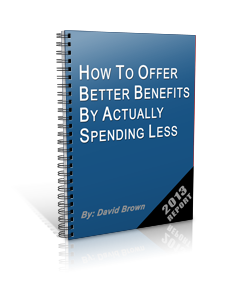 In 2014, millions of Americans who do not currently have health insurance will be required to purchase coverage. Many will not be able to afford the premiums they will be required to pay. To make coverage more affordable for low-income individuals and families, the federal government will offer premium tax credits and cost sharing reductions to those who qualify. If you are eligible for a health insurance subsidy, the amount for which you receive will be determined based on your households income.
In 2014, millions of Americans who do not currently have health insurance will be required to purchase coverage. Many will not be able to afford the premiums they will be required to pay. To make coverage more affordable for low-income individuals and families, the federal government will offer premium tax credits and cost sharing reductions to those who qualify. If you are eligible for a health insurance subsidy, the amount for which you receive will be determined based on your households income.
Health Insurance Subsidy Calculator
Covered California has created a Health Insurance Premium Calculator for people to be able to determine what their potential health Insurance is going to cost in 2014. We have have run extensive comparisons on the Health Insurance Calculator and the Health Plans Brochure that was just recently released. We have found that premiums are reflecting about 25% lower then what is advertised in the Health Plans Brochure. If you are below 400% of poverty level then you will be able to obtain an accurate rate to get your month cost as it will pay a percentage of your annual income.
www.coveredca.com/Health Insurance Subsidy Calculator
Covered California Health Plans Brochure
Calculating Your Premium Tax Credit
Tax credits cap the amount of money eligible individuals pay each month for health insurance. To understand the impact tax credits will have on the cost of health insurance, let’s take a look at three different scenarios for Joe and Mary Jones and their two children.
In scenario 1, Joe’s employer offers health insurance coverage.
Scenario 1:
Joe makes $17/hour, working 40 hours per week for an annual wage of $35,360 ($17 x 2080 hours of work). Under the federal poverty guidelines, he earns slightly more than 300 percent of the federal poverty level. At this level, his health insurance premium would be capped at 9.5 percent of his annual income or $3,359. As long as Joe’s employer charges him less than $3,359/year or $279/month for employee-only coverage, he has access to what is considered affordable coverage. As a result, he and his dependents are not eligible for a tax credit no matter how much his employer charges to cover his spouse and children, even if paying for that coverage would cost his entire salary.
In scenarios 2A and 2B, Joe’s employer does not offer health insurance coverage.
Scenario 2A:
In addition to Joe’s annual wage of $35,360, his wife Mary also earns $17/hour for an annual wage of $35,360, giving them a projected annual household income of $70,780 or $5,898/month before taxes. Under the federal poverty guidelines, they earn slightly more than 300 percent of the federal poverty level. At this level, their health insurance contribution would be capped at 9.5 percent of their annual household income or $6,724 ($560 per month). If their annual insurance premium is more than $6,724, they would be eligible for a premium tax credit, and the federal government would pay any amount in excess of $6,724.
Scenario 2B:
If Joe and Mary work overtime and make an extra $1,000/month, their annual income would be $82,780. At this income, they are still below the 400% of federal poverty guidelines, so their contribution would be capped at 9.5 percent of their income, which is the equivalent of $7,864/year or $655/month. As a result, they will receive a subsidy from the government to pay for health insurance premiums over this amount.
Receiving Your Advance Premium Tax Credit
Tax credits are automatically paid by the government to the insurance companies to reduce your monthly health insurance premiums. As illustrated in the scenarios above, it will be difficult for these calculations to be perfect at the beginning of the year since many factors can influence your total annual income. Only through your tax return will your premiums be accurately calculated if you receive a subsidy. If you overestimate your income at the beginning of the year, you will receive a larger tax return. However, if you underestimate your income, the government will collect any additional premium they paid on your behalf.
Calculating Your Cost Share Reduction
Cost sharing reductions minimize out-of-pocket medical expenses (i.e. deductibles, co-payments, co-insurance payments) and are available to individuals with a household income of 100-250 percent of the federal poverty guidelines, who enroll in a plan through the health insurance exchange (coveredca). Individuals with a household income of 100-200 percent of the federal poverty line will have an out-of-pocket maximum of $2,250 and those with a household income of 200-250 percent of the federal poverty line will have an out-of-pocket maximum of $5,200.



